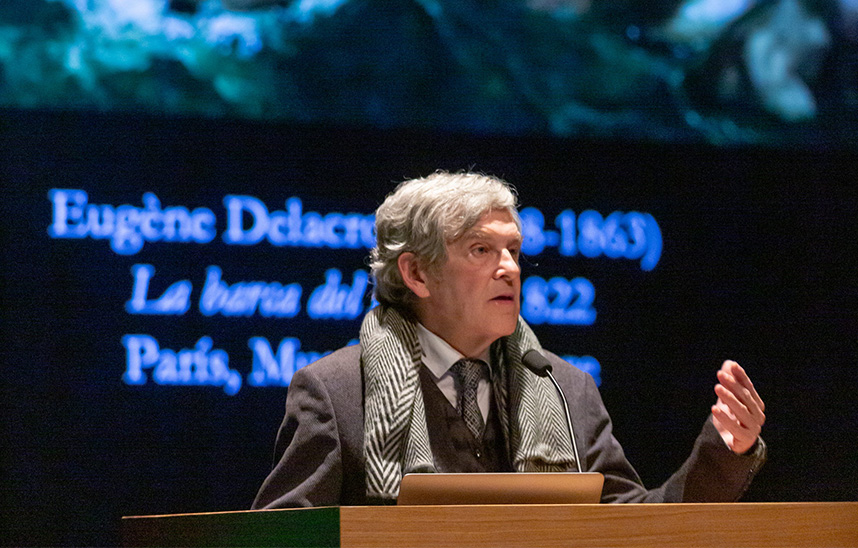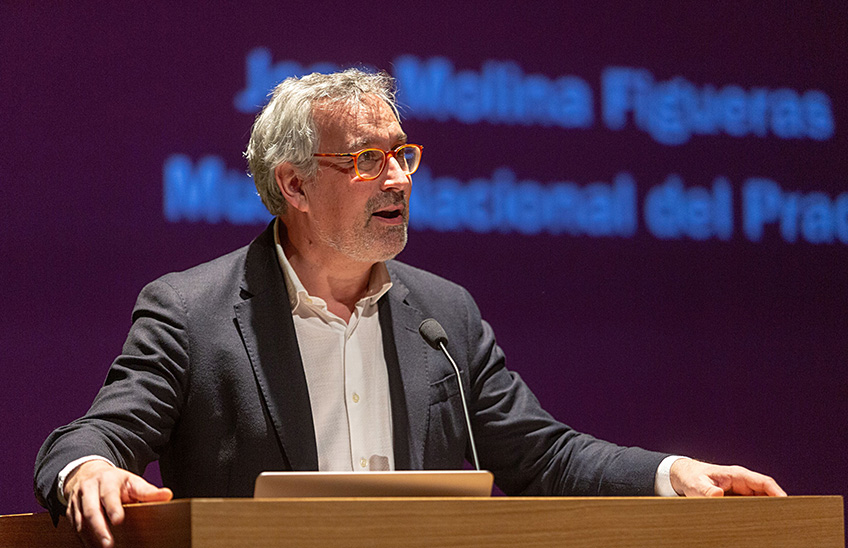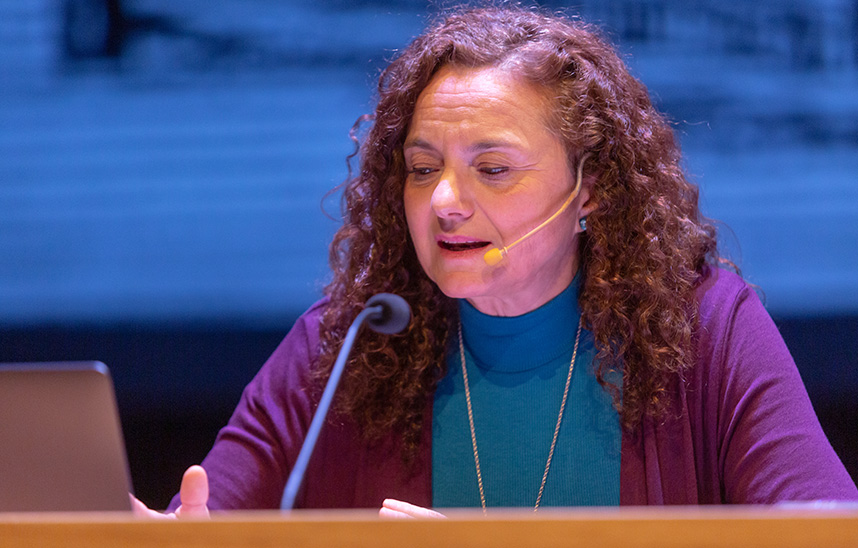Javier Barón: "Artists saw in the Age average a domain of aesthetic perfection".
The Head of Conservation of 19th Century Painting at the Prado Museum gives the last session of the series organized by the Friends of the Prado Museum Foundation and the University of Navarra.

PhotoManuelCastells/
"The fascination with the leave Age average is central to all the effects of 19th century painting". lecture This was stated by Javier Barón, Head of Conservation of 19th century painting at the Prado Museum, at the closing ceremony of the Francisco Calvo Serraller series, organized by the Friends of the Prado Museum Foundation and the School of Philosophy y Letras. The event was chaired by Julia Pavón, dean of the School.
As explained by speaker in his speech, the reasons for this interest in the Age average "stem from aesthetics and the flight to a remote past at a time when industrialization tended to unify". In this sense, it also explains the nationalism that prevailed in different countries. In France, for example, the painter Eugène Delacroix stood out: "One of the polar figures of the 19th century, he dealt with themes of war as well as everyday life, chivalry and novels".
"The origins of the taste for the Middle Ages are in the knowledge of British literature", said the doctor in Art History, mentioning, for example, Lord Byron and Walter Scott. Illustrating with Shakespeare and his work, especially Romeo and Juliet, he affirmed that "the literary inspirations of the period are stronger than the historical motifs". As he pointed out, another great literary source was Dante, with The Divine Comedy, which reflected "the principles of the troubadour aesthetic, the fashion of courtly love, very characteristic of the leave Age average".
Throughout the exhibition , works such as William Blake's The Whirlwind of the Lustful have also been shown, to exemplify how in the third decade of this century "we find that eccentric sense so characteristic of the British". As the expert explained, "it stands out for its restrained scenes, idealized beauty and enjoyment of the melancholic". Starting from Dante and Beatrice by artist Henry Holiday, Baron pointed out that "the love between the two evokes courtly love, which is never consummated".
On the other hand, in France, there was academic painting, he explained. "There was what they called the juste milieu, an intermediate between drawing and watercolor." Among these academicist figures, he has continued, were Gustave Doré and Ary Scheffer. In Germany, however, artists made a proposal recreation of medieval subjects, where the execution and style start from Raphael. "The Germans are stricter and have a taste for drawing in the Florentine tradition," he said.
Starting from this European tour, Javier Barón has encompassed the interest of topic: "The fascination for the leave Age average runs through the Enlightenment, Romanticism and reaches Symbolism, even to the first decade of the twentieth century: there is a continuity". In this sense, he affirmed that "more than a revival, it is a survival: there is no interruption of the Gothic thread".




